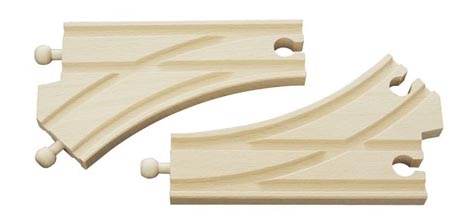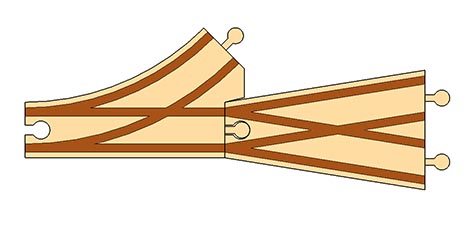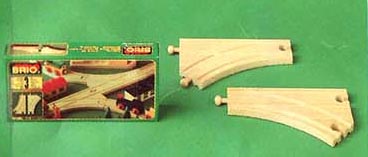You’ve probably noticed that BRIO’s curved switching track L and M, and the mechanical versions L1 and M1, have an oddly-shaped notch at the curved end:

Product photo by BRIO AB
Why this funny shape?
It’s designed to accommodate the straight switching tracks, F and G, like so:

The straight switches F and G were actually the first switches in the BRIO track system, dating back to the very first sets in the 1950’s, and were in fact the only switches for over 20 years. The curved switches and double curved switches, L, M, I and J, did not come along until the early 1980’s.
The first versions of these curved switches were actually slightly different from the ones we see today. The straight track path was actually longer than on the modern switch track, so that the edge on the curved side formed a straight edge as shown in this picture from the 1983 product sheet:

The problem with this original switch design is that the straight track path measures 158mm, which does not correspond to any straight track length in the BRIO system. If you insert one of these older-style switches into a symmetric layout such as a loop, then you have to place a second one on the opposite side to keep the symmetry and ensure the track will still meet.
When the straight path in the switch was shortened to 144mm in order to match the A track length, the edge on the curved side had to be notched in a way that would allow existing BRIO track to connect with it. Specifically, F and G with their angled ends had to fit, hence the funny shape to the notch.
This is just so very very very cool! Thanks for posting as I must have one! The grandson will just love this set!